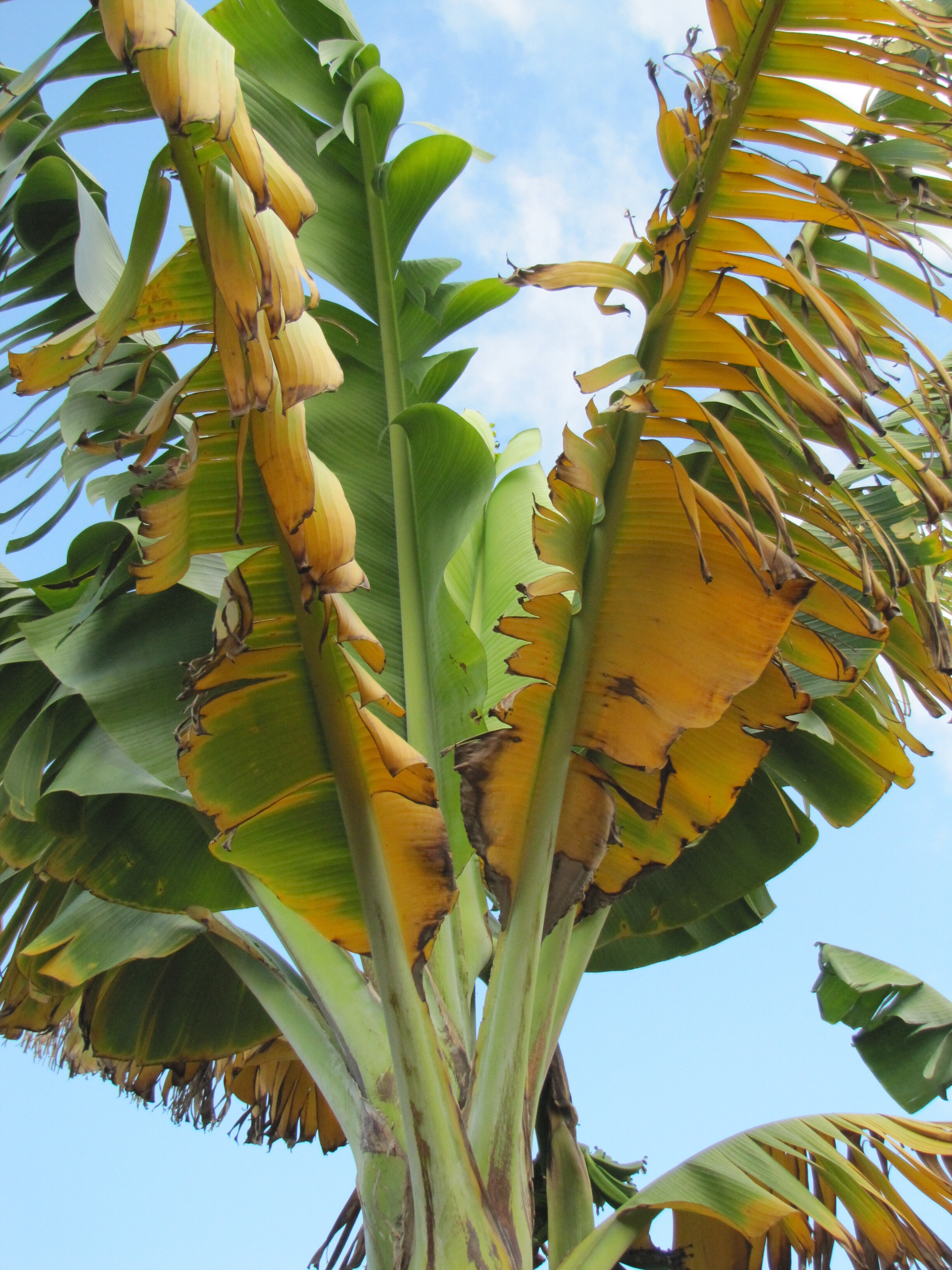Bananas are one of the most consumed fruits globally and yet they are facing a threat that could push them to the brink of extinction. A fungal disease known as Fusarium wilt of banana (FWB) is causing damage on bananas crops targeting the popular Cavendish variety.

Also Read: World’s Oldest First-Time Panda Mom Ying Ying Gives Birth to Twin Cubs
Fusarium wilt also referred to as Panama disease, is a plant disease that affects bananas and is caused by the soil-borne fungus Fusarium oxysporum.
The specific strain responsible for the current crisis is Foc TR4, which has a unique ability to devastate Cavendish bananas, the most commercially grown and consumed banana variety worldwide.
Once the TR4 fungus infects a banana plantation, it remains in the soil indefinitely, making it nearly impossible to cultivate Cavendish bananas in that area again.
The bananas variety known as Gros Michel and it was nearly wiped out in the 1950s by a different strain of Fusarium wilt.
Gros Michel was eventually replaced by the Cavendish variety, which was more resistant to the Fusarium strain that destroyed Gros Michel.
The Cavendish bananas has been the industry standard for decades, thriving in monocultured plantations across the world.
The 1990s is the beginning of a new wave of banana wilt, this time caused by Foc TR4. This strain was first identified in Taiwan in 1989 and spread to Southeast Asia, then to Africa, the Middle East and eventually Central and South America.
Foc TR4 is dangerous because it can easily spread through contaminated soil, water, tools and even footwear.
Recent research by an international team led by the University of Massachusetts Amherst revealed that Foc TR4 did not evolve from the strain that wiped out Gros Michel bananas.
The research identified that TR4’s virulence is linked to certain accessory genes in its genome that are associated with the production of nitric oxide.
These accessory genes, distinct from the core genome shared by all Foc strains, give TR4 its deadly edge by helping it produce and detoxify nitric oxide, which aids in its invasion of banana plants.
The research team, which included scientists from China, South Africa and several US universities, sequenced and compared 36 different Foc strains from around the world.
The study found that the removal of two specific genes responsible for nitric oxide production in TR4 reduced the fungus’s ability to cause disease in Cavendish bananas.
Although the study has identified the genes linked to TR4’s virulence, there is still much to learn about how these genes contribute to the fungus’s ability to infect banana plants.
Understanding the role of nitric oxide in the disease process could lead to the development of targeted treatments or resistant banana varieties.
However the complexity of the Foc species complex and its ability to adapt to different hosts and environments presents challenges for researchers.
A critical factor in the spread and impact of Foc TR4 is the practice of monoculture, where large areas are planted with a single crop variety, in this case the Cavendish banana.
Monocultured crops are highly susceptible to disease outbreaks because there is little genetic diversity to buffer against pathogens.
The lack of diversity means that once a disease like Fusarium wilt takes hold, it can wipe out entire plantations leading to massive economic and agricultural losses.
Also Read: Hurricane Ernesto Heads Towards Bermuda, With Impacts on Atlantic Canada
During the 1950s, Fusarium wilt led to the near extinction of the Gros Michel bananas. The disease destroyed bananas plantations across the world forcing the industry to seek alternatives.
The Cavendish bananas was introduced as a disease-resistant alternative. This variety became the backbone of the global banana industry replacing Gros Michel.
However by the 1990s the disease re-emerged in a more virulent form known as Tropical Race 4 (TR4), putting the Cavendish bananas at risk.
Research has revealed that the Fusarium genome is divided into two main parts, the core genome and the accessory genome.
The core genome is responsible for the basic functions necessary for the survival of the fungus. In contrast, the accessory genome is more flexible allowing the fungus to adapt to different environments and hosts.
A key discovery in the study of Foc TR4 is its ability to produce and detoxify nitric oxide, a gas that facilitates the infection process.
TR4 was first identified in Southeast Asia but has since spread to other banana-growing regions including Central America.
In a study, scientists sequenced and compared 36 different Foc strains from around the world including those responsible for the current outbreak.
By identifying the genes responsible for nitric oxide production in TR4, researchers have opened up new avenues for controlling the fungus. Experiments have shown that eliminating these genes can reduce the virulence of the pathogen.
While the exact role of nitric oxide in the infection process is still being studied, the discovery of its importance suggests that targeting this gas could be a viable strategy for protecting bananas crops.
Also Read: Greece Wildfire: Residents Evacuated as Wildfires Near Athens Spreads
























